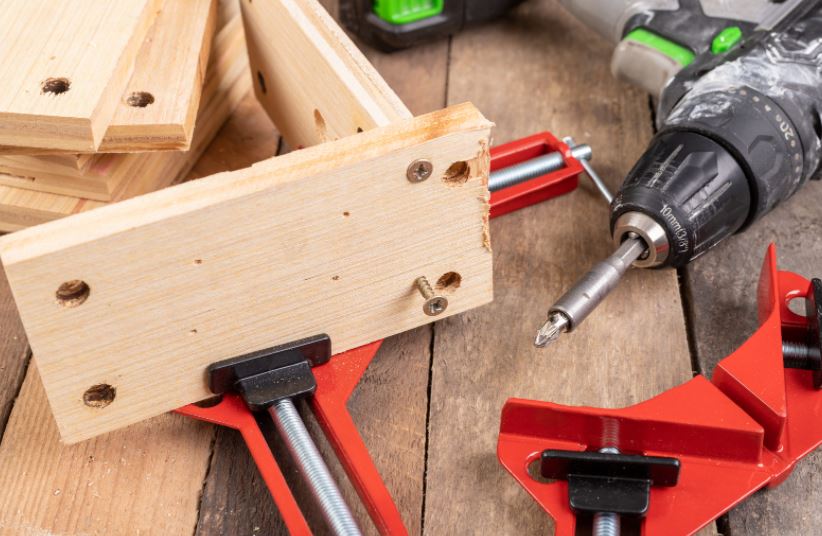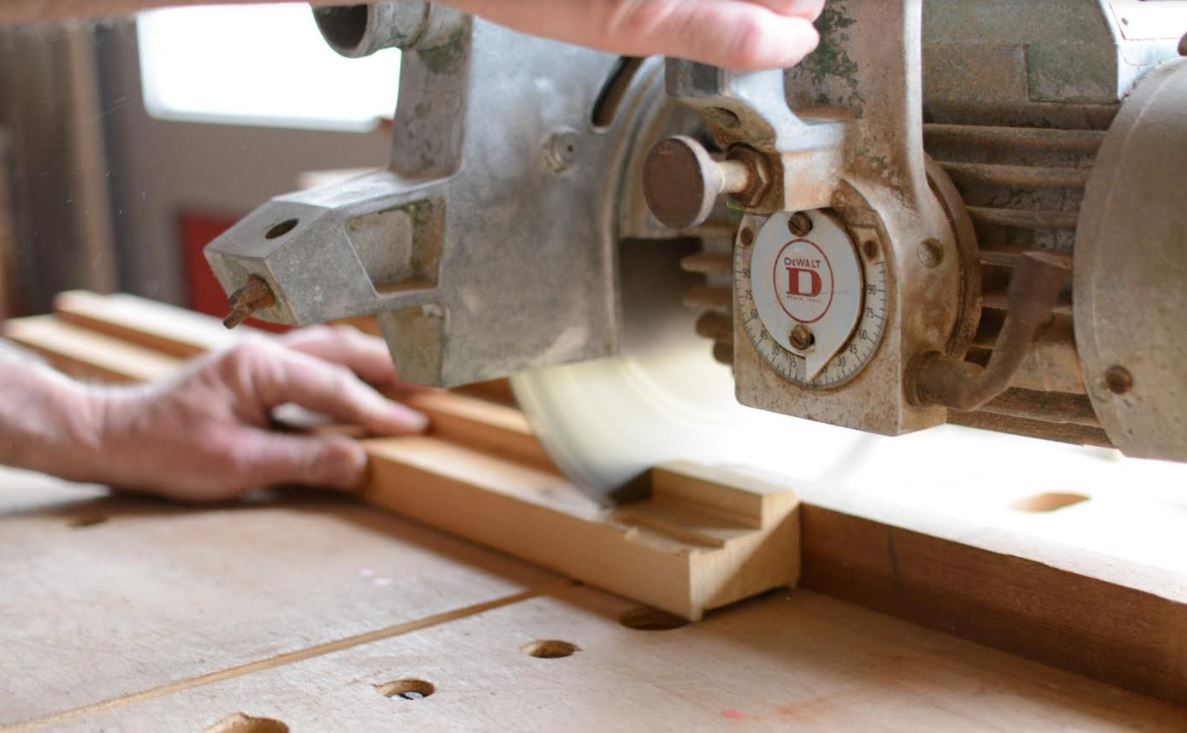Woodworking is a popular hobby for people of all ages, and it’s easy to see why: it’s an activity that improves your mental health and allows you to express yourself, as well as to have practical uses.
One of the first steps of breaking into the woodworking hobby is learning about the many different wood joinery types–how to join two pieces of wood together.
Wood joinery is a key part of any woodworking project, but many styles are to choose from. Some wood joinery types are simple and utilitarian, while others are artistic and eye-catching.
Understanding the different wood joinery types will help you become a better woodworker, capable of producing more stylish pieces. Read on to learn about ten wood joinery examples for your next project.
Table of Contents
1. Butt Joint
The most basic wood joinery style is the simple butt joint. The butt is the name given to one end of a wooden timber; in a butt joint, you place one timber’s butt against the butt of another timber, forming a right angle.
The two pieces of wood are then joined together with glue and some fastener, such as screws or small wooden dowels.
The butt joint is about speed and practicality, not looks. It’s most often used in projects that aren’t meant for display.
2. Miter Joint
A miter joint is a variation on the butt joint in which both pieces of wood are cut at an angle before fitting them together. Usually, woodworkers cut both pieces at about a forty-five-degree angle.
Like a standard butt joint, you need to secure a miter joint with screws or other fasteners.
The miter joint gets its name from the miter saw that cuts are common in wood joinery systems everywhere. The joint itself is a popular choice for window frames, such as Home Counties Joinery‘s.

3. Half-Lap Joint
Half-lap joints get a bit more complex. This joint features two pieces of wood that have been shaved down to half their thickness at the point where they overlap (most often at the butt, similar to the above joints).
This is also called a cross-lap joint if used in the middle of one of the wood pieces, forming a ‘T’ intersection.
This method of wood joinery is popular in furniture construction because it gives your piece a consistent thickness.
4. Mortise and Tenon Joint
A mortise and tenon joint looks like a butt joint, but the construction is much different. In mortise and tenon joints, you carve the pieces to fit together, rather than holding them together with fasteners.
You start by carving a recess (or mortise) into one piece of wood, then carving a protruding segment (or tenon) into your other piece. Then, you fit the two pieces together.
This is one of the strongest wood joinery types due to the large gluing surface area it provides.
5. Rabbet Joint
The rabbet joint is simple but visually appealing–and yes, that’s ‘rabbet,’ not ‘rabbit.’ Rabbet is a Middle French term that means “to force down.” In a rabbit joint, one timber has a recess along the edge near the butt.
Another timber is then joined to that recess, forming a strong joint.
This is one of the more popular wood joinery types for its strength and attractiveness. Many woodworkers opt to recess both timbers to form a double rabbet joint.
6. Biscuit Joint
A biscuit joint is a less common wood joinery type used for particleboard and other sheet-like wood far more often than in larger projects. It relies on small wooden discs called biscuits.
In a biscuit joint, you carve rounded grooves into both pieces of wood you want to join. Then, you glue a biscuit into one groove before inserting and securing it into the groove in the other piece of wood.
7. Box Joint
A box joint is a great way to join two timbers together to form a right angle. The first step is carving the butts of both timbers into a series of protrusions called fingers.
Once you have symmetrical fingers at the end of each timber, you can slot them together and secure them with glue.

Box joints are strong and look great–a perfect choice for the corner of any woodworking project.
8. Dado Joint
Dado joints are a bit like a half-lap joint or rabbet joint, in that it involves cutting a recess or trench into one piece of wood so that another can be inserted.
It’s a fairly basic wood joinery style, but it’s effective for projects such as cabinets. A dado cut should always be parallel to the grain, which adds a bit of visual flair.
The term dado comes from the Italian word for the plinth.
9. Dovetail Joint
Dovetail joints are one of the more advanced wood joinery types, featuring a series of interlocking shapes that give the joint a distinctive look. A dovetail joint displays the skill of the craftsman that made it.
Like a box joint, dovetail joints are constructed by carving the ends of two pieces of wood into symmetrical shapes. Where a box joint uses simple fingers, though, dovetail joints use trapezoidal shapes.
There’s a variation called a half-blind dovetail that leaves the exterior side of the timber flat, hiding the dovetail joint.
10. Tongue and Groove Joint
A tongue and groove joint is made by giving one piece of wood a protruding ‘tongue’ that can slide easily into a recessed channel (or groove) on another piece of wood.
Tongue and groove joints have similar uses to biscuit joints: they’re good at creating flat surfaces. They’re most commonly seen in wood flooring.
Mastering the Many Wood Joinery Types
No matter what kind of woodworking you’re doing, it helps to know about the different wood joinery types. Wood joinery can affect the stability and style of your project, so choosing the right joint is important!
Are you looking for more tips on building (or buying) furniture? Visit our furniture blog for advice on finding the perfect furnishings for your home!

